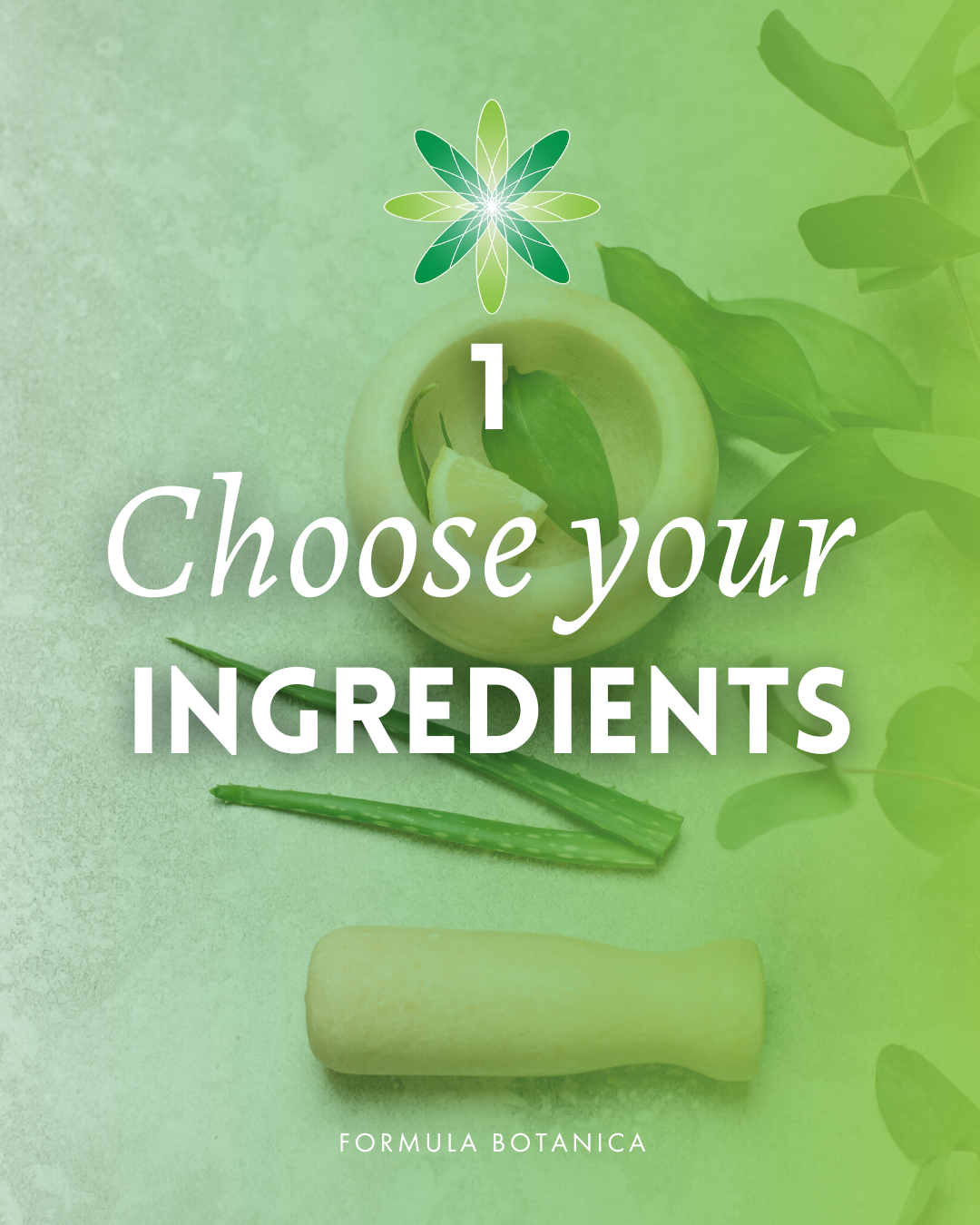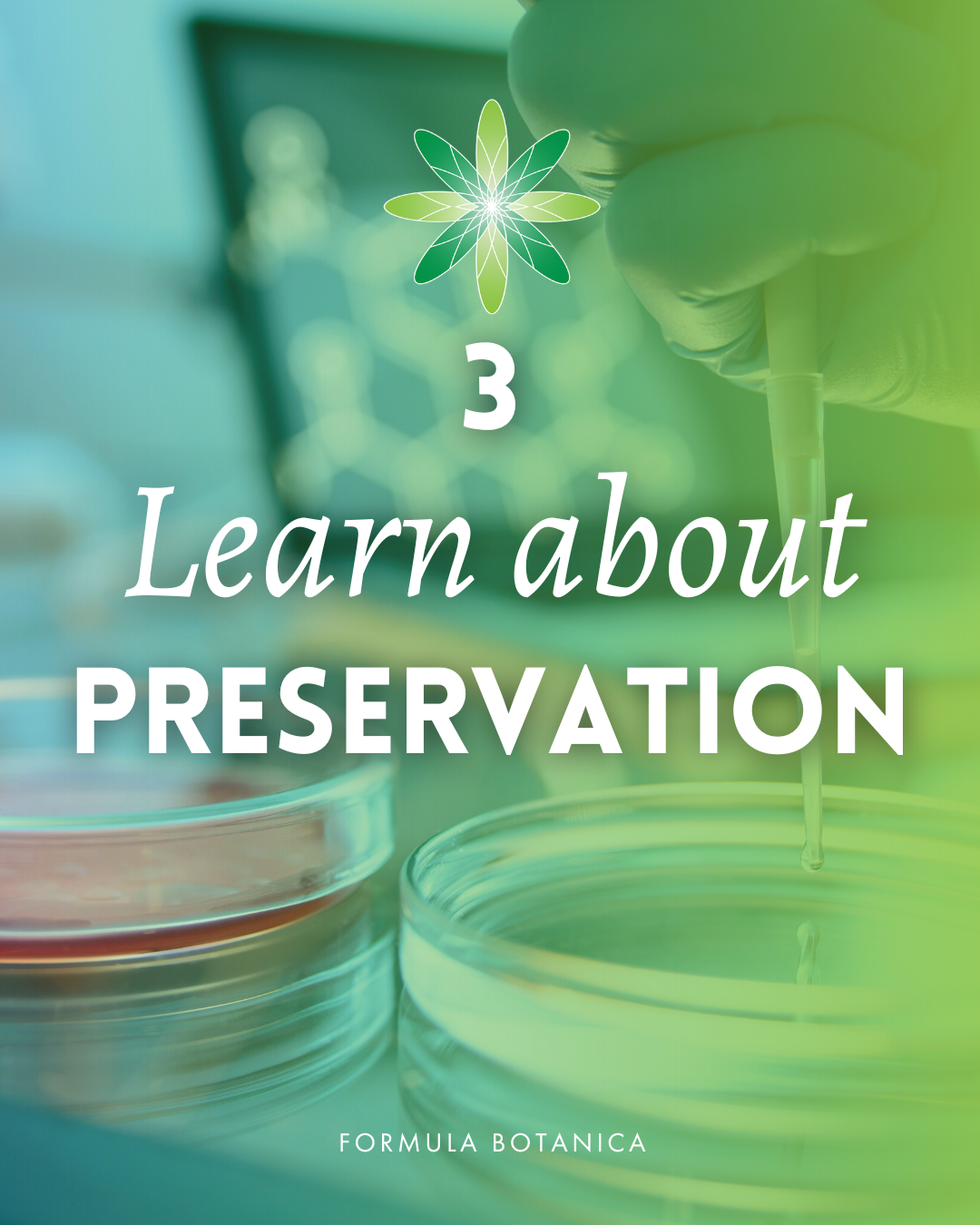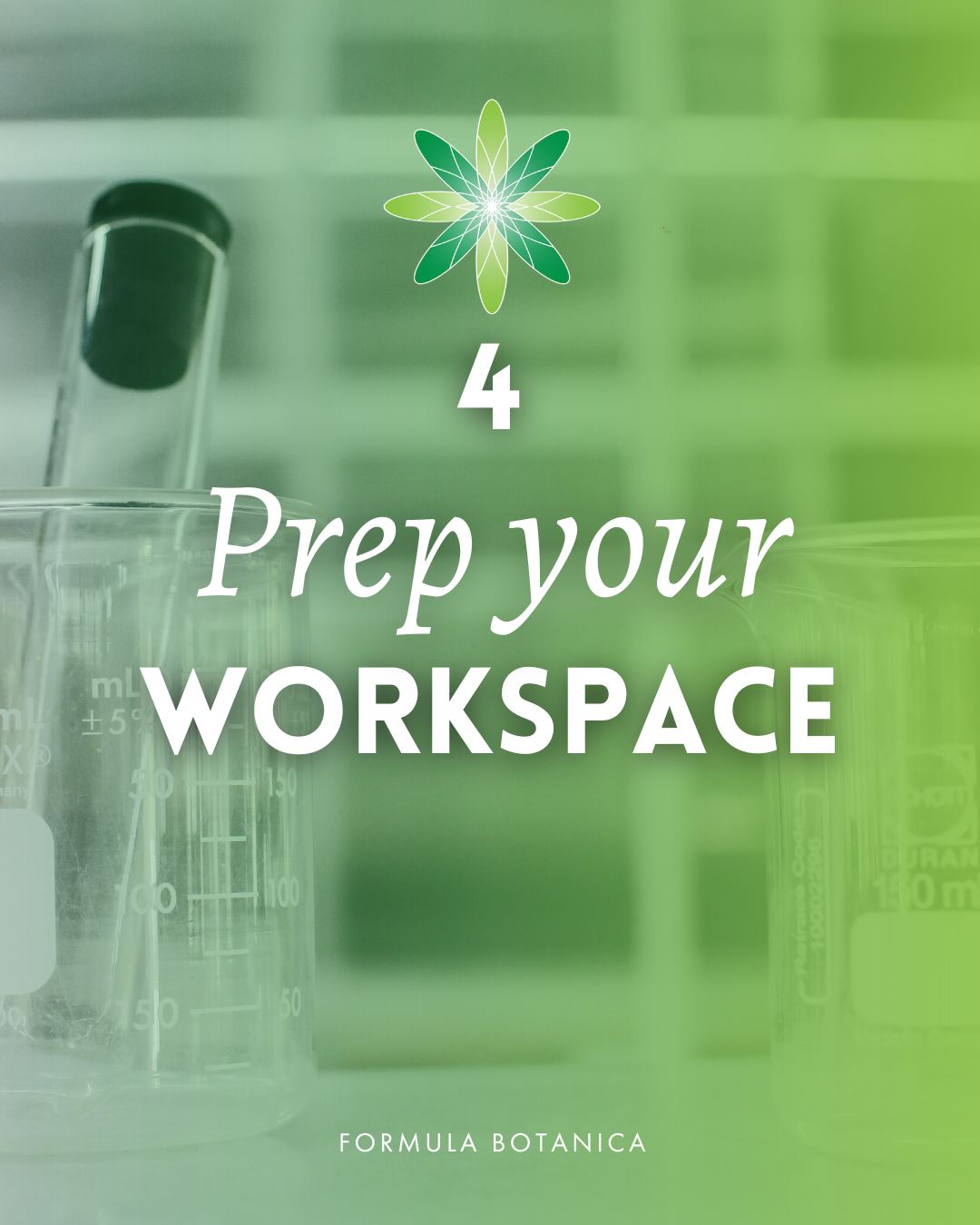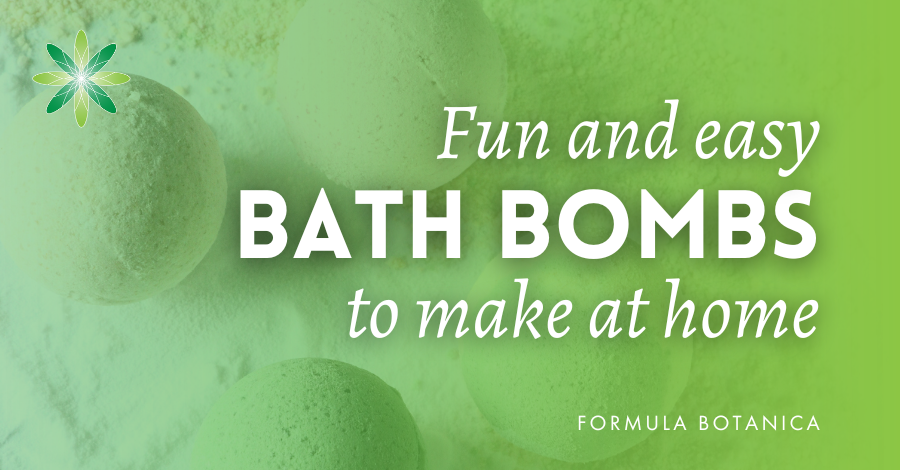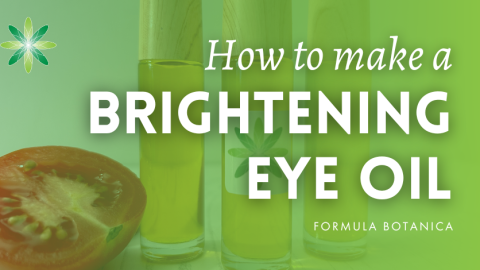Learning how to make natural skincare products is incredibly rewarding and empowering. Imagine whipping up a fluffy body butter, blending a botanical toner, or creating your own organic serum—all from scratch. Once you experience the fun and simplicity of formulating your own skincare, you’ll likely turn away from store-bought products for good. In fact, after mastering the art of formulating, you will probably never buy a cleanser again!
If you’re reading this step-by-step guide, chances are you’re hesitant about following the many DIY recipes you find online. And with good reason—you don’t want to end up with unsafe, unstable, or potentially unsellable skincare products. Instead, you want to learn how to formulate professional organic skincare that truly works.
So what are the steps required to learn how to make safe and stable natural skincare products? Let’s find out!
Step 1. Choose your Botanical Ingredients
One of the most exciting parts of learning how to make natural skincare products is getting to work with the vast array of botanical ingredients available to skincare formulators. Every formulator we’ve met gets excited by the opportunity to work with herbs, leaves, stalks, roots, petals, buds, barks, seeds and flowers.
There is a global movement towards combining beauty with wellness, where people want plant-based ingredients in their beauty products because they feel that we have rejected the knowledge about plants passed down by our ancestors. Many traditional remedies are now being rediscovered and used, which is why we want to incorporate those amazing plants into our natural skincare products.
However, not every botanical ingredient should be used on the skin and some should be used in low percentages, so you need to start researching to find out which botanical ingredients work best when you’re choosing the right ones for your formulation.
Growing Skincare Herbs
Firstly, are you growing your botanical ingredients? Here at Formula Botanica, we have many graduates who have set up large herb gardens with the purpose of using their harvest in their formulations.
If you are considering growing your own herbs, you’ll need to consider which you’ll want to use. Here are some examples:
Then, you’ll need to figure out how best to harvest your skincare herbs, dry them and turn them into extracts. The easiest way is probably to macerate herbs such as calendula, chamomile and lavender into carrier oils.
Aloe vera can be used directly from the plant (but should then immediately be preserved) and marshmallow has gel-like qualities so can be turned into a decoction (which should, again, immediately be preserved when you make natural skincare products).
Learn more about growing your skincare herbs below:
How to grow skincare plants
How to make macerated oils
7 steps to choosing the right botanical oil for macerations
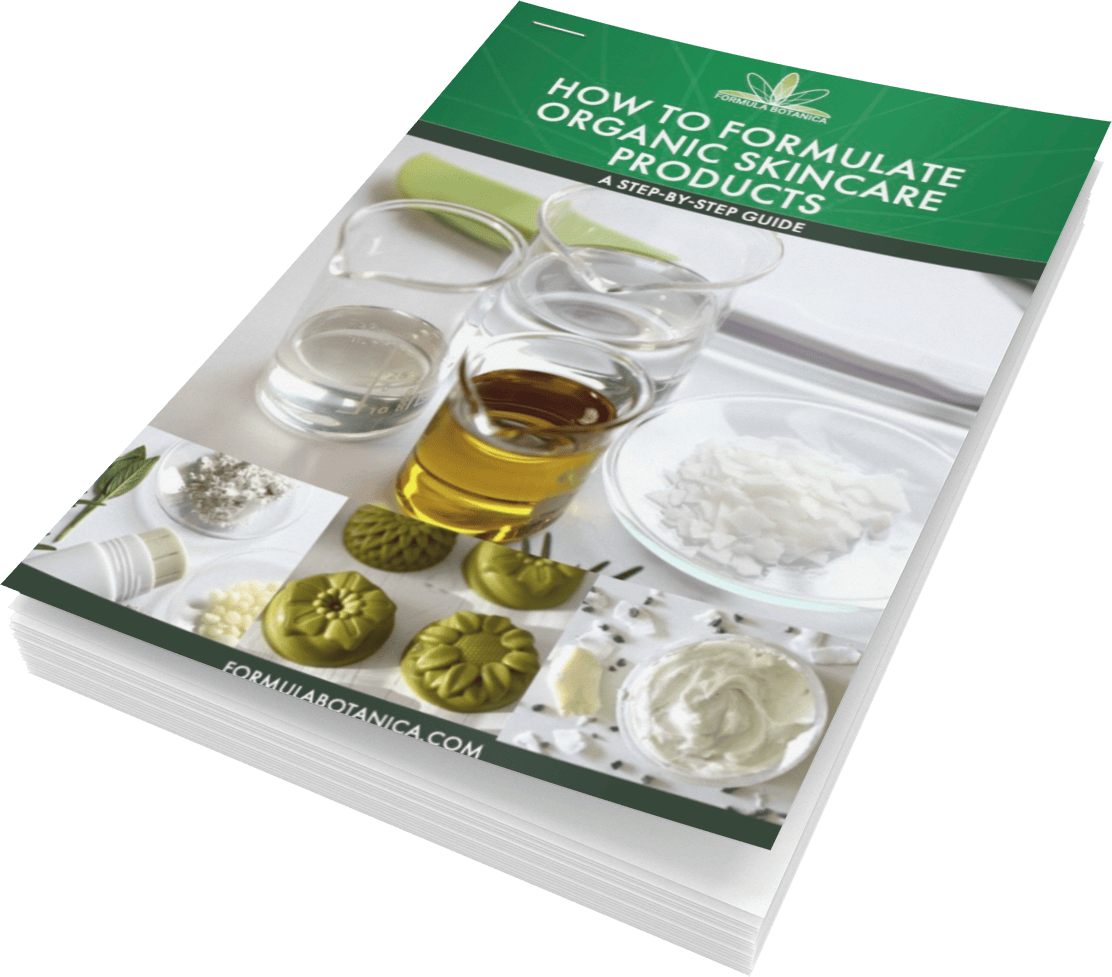
Do you want to learn how to formulate organic skincare products?
Whether you're a complete beginner or looking to enhance your skills, our free PDF will guide you through creating luxurious, natural formulations from scratch. Click Here
Buy Skincare Herbs
If creating your own extracts is a step too far, then don’t worry because dozens of cosmetic ingredient companies around the world are ready to sell extracts to you. When buying extracts, make sure you investigate the following 4 steps:
INCI
Always start by looking up the cosmetic name for your chosen extract. The beauty industry uses a naming system called the International Nomenclature of Cosmetic Ingredients (INCI – pronounced ‘inky’).
Your extract should list everything in the bottle, including any preservatives or solvents, which sometimes have to be added to extracts to give them a shelf life.
When you’re armed with this information, you should know exactly what’s in the ingredients you’re buying. Find out more about INCI below:
Skin compatibility
Now that you’ve decided to make natural skincare products, you want to make sure you choose the right ingredients to benefit the skin. Quiz your suppliers on what your plant-based extracts can do for your skin and make sure the science stacks up.
Solubility
Oil and water don’t blend. Oil floats on top of water. If you plan to make an oil-based serum, then you won’t be able to incorporate a water-based plant extract in it. Similarly, if you’re making a toner and plan to add essential oils, then they will float on top of the toner. Make sure you find out the solubility of your chosen extract.
Sustainability
In a world where we are rapidly losing our biodiversity and destroying habitat after habitat, we need to be extremely careful about the origins of our botanical ingredients. Huge demand from all sorts of industries, including the cosmetic sector, is seeing certain plants being overharvested. For instance, certain aromatic trees in particular are facing wide-scale ecological pressure.
When you decide to make natural skincare products, always make sure you check the sustainability of your ingredients by quizzing your suppliers. Find out more about researching your cosmetic ingredients below:
How to research cosmetic ingredients for organic skincare
7 tips on sourcing sustainable botanical ingredients
Choose Skincare Herbs
Now that you’ve decided whether you’re going to grow or buy your plant-based extracts, it’s time to choose the ones you want to work with. Be inspired by your surroundings, your interests, and your environment.
We encourage our students at Formula Botanica to approach skincare formulation as an art as well as a science – taking inspiration from anywhere: colours, flavours, countries, music, nature, words, emotions and seasons. Some skincare companies create ranges based on the beauty traditions of a particular culture. Others are influenced by foods, emotions, or geographical regions.
We recommend choosing a few ingredients that appeal to you, researching them and then starting simple.
Also, and this is very important, don’t ever buy expensive ingredients when you first start making natural skincare products. You will likely experience plenty of formulation disasters, so it’s best to start as simple as you can.
Step 2. Make Natural Skincare Products
Now that you have a rough idea of the types of ingredients you want to work with, it’s time to decide which natural skincare product you’re going to make. The world is your oyster: you can choose to make butters, balms, lotions, serums, gels, masks, scrubs, oils, cleansers, creams, toners, and moisturisers – or branch out into haircare and start making natural shampoos, conditioners, or styling products.
Need inspiration? Enrol in our award-winning Diploma in Organic Skincare Formulation or Diploma in Organic Haircare Formulation
Start Simple and Anhydrous
If you’re new to making natural skincare products, we always recommend starting simple and safe. The best way to do this is by making anhydrous skincare formulations, which don’t contain any water, and therefore won’t need any preservation.
Examples of anhydrous formulations include body butters, face oils, balm cleansers, lip balms or powdered masks. The reason we encourage you to start anhydrous is because oil-based formulations aren’t breeding grounds for microbes and don’t need to be preserved.
They do however require an antioxidant like Vitamin E or Rosemary CO2 extract, which will slow down the process of your oils and butters going rancid.
Here are some anhydrous formulations you can easily recreate at home:
How to make a day facial oil
How to make a nourishing hand balm
How to make a tuberose & neroli whipped body butter
Experiment with Inexpensive Ingredients
It’s easy to get carried away with your botanical skincare ingredients when making natural skincare products. The first time you open a delivery and find yourself confronted with luxurious carrier oils, fragrant essential oils, delicate hydrosols, exciting emulsifiers and exotic plant extracts, you might immediately find yourself designing a formulation that contains all of them.
However, as any formulator will be able to tell you, you will inevitably experience disaster. And this is a good thing because you will learn more from your mistakes. Particularly once you move beyond anhydrous formulations, you will find that emulsions, gels and foaming products can be tricky to get right.
Never start experimenting with your most precious ingredients. Instead, make that emulsion with water and a cheap vegetable oil and once you’ve mastered the technique, start to trial your gorgeous plant-based ingredients and get to know how they behave. Find out more about the biggest mistakes people experience when they start formulating:
Biggest mistakes made by artisan skincare formulators – 1: Fear of failure
Biggest mistakes made by artisan skincare formulators – 2: Try to run before you can walk
Practise, Practise, Practise
Finally, you will only be able to make natural skincare products that are safe and stable if you practise. For instance, emulsification is a technique that comes through trial and error (or, as our Education Team sometimes says at Formula Botanica: “trial and horror”!).
Get yourself set up in your artisan lab and set aside time to make the same skincare formulation several times in a slightly different way. Treat the process of making natural skincare products as a fun experiment, where you see how your ingredients behave at different percentages or when blended with other ingredients.
Initially, your balms might be grainy, your emulsions might split, your essential oils might not blend with your toners and your cleansers might not foam. But don’t worry: practice makes perfect. And before you know it, you’ll have a gorgeous lotion to use for yourself or to give to friends and family. You can find out more about this topic below:
Everything you wanted to know about natural & organic emulsifiers
How to make an aloe vera repairing mist
How to make an emulsion with Xyliance
Step 3. Learn about Natural Preservation
When you decide to make natural skincare products, you need to have a plan for making safe formulations and that means deciding whether or not you want to use preservatives.
The choice is simple: you either make only anhydrous formulations, which don’t need a preservative, or you make natural skincare products that contain water, which will need a preservative if you want them to have a shelf life of longer than a week. You should also consider how you will preserve products that will have water introduced to them, such as an oil-based salt scrub that you might keep in the shower.
We could point you towards thousands of unsafe recipes online, which ask you to blend water-based ingredients without a preservative, which could go mouldy and encourage microbial growth within a matter of days. You simply do not want to be rubbing microbes all over your face, which is why it’s so important to get the safety right.
Be Proud of Preservation
Our ethos at Formula Botanica is that we need to be proud of preservation because natural preservatives protect your skincare formulation and, if you’re planning to sell your natural skincare products, your customer and your business.
And let’s not forget that the risk of using preservatives is always lower than that of using unpreserved water-based cosmetics. Here’s why:
The good news is that it is still possible to make natural skincare products that contain gorgeous botanical ingredients that are based on water, such as hydrosols or aloe vera gel, and you can still make sure that those formulations are safely and naturally preserved.
Please remember that Vitamin E, grapefruit seed extract and rosemary extract are NOT preservatives. These ingredients are added to natural skincare formulations to extend the shelf life of the oils and butters contained in them. Antioxidants delay oils and butters from going rancid. As we saw in Step 2, you can extend the shelf life of an oil by adding an antioxidant to it. Find out more about antioxidants below:
Our Natural Preservation Checklist
The best way to choose a natural preservative is:
- Check that your natural preservative has broad-spectrum activity against bacteria, fungus and yeast. Does it need to be paired with another preservative to fully protect your formulation? You don’t want to use a preservative that only works against one type of microorganism and lets another type proliferate in your lotion.
- Make sure that your natural preservative is compatible with your formulation. Does it have the right solubility? Does it have the right pH range? These are all trickier components of making natural skincare products, but our Diploma in Organic Skincare Formulation explains these concepts in detail.
- How long a shelf life does it give your natural skincare product? If you intend to keep your lotion for over a year but your preservative only works for 3-6 months, you may need to consider changing your choice.
- How easy is it to work with this natural preservative? Does it require boosters or need to be dissolved at a certain temperature? Try to make your life as simple as possible when choosing the right preservative.
Interested to learn more about natural preservation? Check out these posts:
Everything you wanted to know about natural preservatives
16-point checklist: Choosing a natural preservative for skincare
Step 4. Set up your Workspace
Even if you’re making formulations for your own use, you want to make sure that you have a sanitised and clean workspace, so you can prevent contamination from occurring. After all, you don’t want to order lots of beautiful botanical ingredients, spend ages learning how to create your own serum and then contaminate it with the kitchen dishcloth!
In other words, if you want to make natural skincare products at home, you’ll need to set up a workspace, which really shouldn’t be your kitchen unless you can properly sanitise your entire workspace and keep it clean each time you formulate.
The most important points to remember are:
Implement Good Hygiene
Keep your working area clean, tidy, well-ventilated and free of food, drink, smoke and any illnesses or infections. Check, clean and maintain the equipment you use before and after every time you make natural skincare products. And always wash your hands!
Safety First
Be safe in how you handle skincare ingredients, equipment and products in your workspace. Although natural skincare products will contain ingredients that are generally very safe on the skin, you may occasionally be working with ingredients that could cause sensitisation if they were applied neat, such as many essential oils. Make sure you always use proper personal protective equipment such as aprons and gloves, which are inexpensive and easy to buy on Amazon.
Good Storage
Maintain good storage for your ingredients, as well as your finished natural skincare products. Store your ingredients in the fridge or in a cool, dark space (follow the storage conditions set by your supplier). Keep your finished formulations stored in a sealed and safe environment away from direct heat and light and labelled properly.
Learn more about GMP (Good Manufacturing Practice) below:
Beginner’s guide to setting up a home formulation lab
How to set up your artisan skincare lab
The skincare formulator’s most important tool
Step 5. Turn Your New Skills into a Natural Skincare Business
Once you discover how easy and fun it is to make natural skincare products, you might decide to turn your newfound skills into a beauty business. After all, if you love your formulations, who’s to say that you might not be able to sell them? The world has never been more receptive to natural skincare and predictions are the global organic personal care market will reach $54bn by 2027.
Find out more about how to start a natural skincare business below:
How to become an organic skincare entrepreneur
How to start a cosmetic business at home
How to write a beauty products business plan
Creating a Natural Skincare Products Range
When designing a beauty products range, your natural skincare formulations should all work together to benefit your customers. For instance, if your ethos is to make gentle skincare with only a few ingredients, then each of your formulations should reflect that. Think about your product’s features and benefits – these will play a large role in the overall success of your beauty brand.
You should also consider how your formulations complement each other. Try to think about the way that your customer could use each of them. If you create a range of 5 shampoos, then clearly you’re going to need 5 different customers to buy them or wait for your first customer to use each bottle and return for another one. There is nothing wrong with this approach, but you’ll need to find more customers to sell to.
On the other hand, if you create a cleanser, toner, mask, moisturiser and serum, then one customer can use each of your products simultaneously. You then also have the opportunity to try and sell more products to the same customer.
Want to learn how to start your own beauty business? Enrol for our online Diploma in Beauty Brand Business Management.
Get the Right Formulation & Business Education
To elevate your skills in making natural skincare, you need to move beyond DIY and become a skilled formulator. While a DIYer can follow a recipe, they’re limited to replicating what already exists. A formulator, however, has the expertise to create unique, customised products from scratch.
Just take a look at our amazing graduates. They are confident formulators and can create any product they want, thanks to the knowledge we gave them.

Do you want to learn how to formulate organic skincare products?
Whether you're a complete beginner or looking to enhance your skills, our free PDF will guide you through creating luxurious, natural formulations from scratch. Click Here
For an award-winning, internationally accredited online education, Formula Botanica’s 5-star courses offer everything you need. You’ll quickly learn to create and sell natural skincare products worldwide.
FAQ – How to Make Natural Skincare Products
How can I make natural skincare products?
Formulating is fun, easy, and empowering. As long as you follow the right formulation framework and educate yourself, you can easily make your own natural skincare. You should start with simple botanical ingredients and oil-based formulations. Then, you can slowly build up your formulation skills through practice.
How do I choose the right herbs for my skincare products?
When selecting herbs, look at the ingredient’s solubility, skin compatibility, sustainability and INCI name.
Which natural skincare products can I easily make at home?
We recommend starting with body butters, balms, and oil-based serums, then progressing to lotions, toners, gels, scrubs and masks. You can easily make all of these natural skincare products at home by following our formulation advice and safety guidelines.
How do I make sure my natural skincare products are safe?
If you formulate with water or hydrosols, you’ll need to use a preservative. But don’t worry, using natural preservatives isn’t as complicated or daunting as it sounds. Always make sure you follow the supplier’s recommendations and check that your preservative is compatible with your formulation and packaging.
FREE TRAINING
Learn how to become an
Organic Skincare Formulator
FREE TRAINING
How to become an
Organic Skincare Entrepreneur
FREE TRAINING
How to become an
Organic Skincare Entrepreneur
Leave us a comment
Lorraine Dallmeier is a Biologist, Chartered Environmentalist and the CEO of Formula Botanica, the award-winning online organic cosmetic science school. Read more about Lorraine and the Formula Botanica Team.


